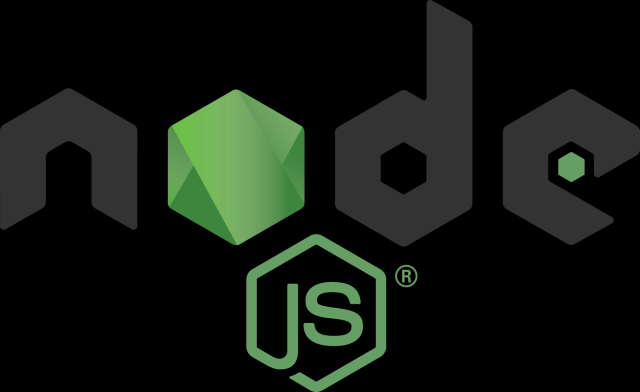Farewell to Python III
Zápisník experimentátora
I have to hurry to convert my blog, because Google is pushing us to upgrade or a completely switch to a different environment. The closest to me is javascript and NodeJS. I have worked hard on the project in previous weeks and I have already finished some parts of the blog. I've finished the homepage, blog view, page view, and blog index. Everything is still slightly unfinished, but fully functional.

Python
I told myself it was time to show, how I had made the original blog. For example, this is a sample of the code that generated a specific blog page.
class SingleArticleUrlBlogHandler(webapp2.RequestHandler):
def get(self, year, month, path):
template_values = {
'caption': u'Arduino Slovakia',
'description': u'Zápisník experimentátora',
'path': self.request.path,
'showadd': True
}
# nastavenie jazyka stranky
lang = self.request.get('lang')
if lang not in ['sk', 'cs', 'en']:
lang = 'sk'
a = Article.geturl_translated(year + "/" + month + "/" + path, lang)
if a is None:
self.response.set_status(404)
self.response.write("404 Page Not Found!")
return
if a.has_parent:
pl = parent.ParentList()
a.parent_url = pl.translate_url(a.parent_name)
a.parent_name = pl.translate_name(a.parent_name)
template_values['bol_preklad'] = a.bol_preklad
template_values['article'] = a
template_values['caption'] = a.title
template_values['render'] = 'article'
template_values['lang'] = lang
if lang == 'sk':
template_values['canonical'] = '/blog/' + year + '/' + month + '/' + path
else:
template_values['canonical'] = '/blog/' + year + '/' + month + '/' + path + '?lang=' + lang
funkcie.tlang = template_values['lang']
template_values['languages'] = funkcie.get_languages(a.languages, self.request)
template_values['menu'] = menu.get_menu(template_values['lang'])
hidden = self.request.get('hidden')
template_values['hidden'] = hidden
if hidden == '1':
template_values['showadd'] = False
# ziskanie zoznamu suborov
template_values['uploads'] = self.get_download(a.download)
# upravenie menu
template_values['menu'] = self.modify_menu(template_values['menu'], a)
# YouTube
if a.jason:
data = json.loads(a.jason)
if 'youtube' in data:
yl = []
y = data['youtube']
# logging.info(y)
if isinstance(y, list):
yl = y
# logging.info('list')
if isinstance(y, basestring):
yl.append(y)
if len(yl):
template_values['youtube'] = yl
template = JINJA_ENVIRONMENT.get_template('blog.html')
self.response.write(template.render(template_values))
Javascript
And this is a sample of new code that does the same thing. Not everything is implemented there, and I won't implement some of the original features of the blog.
router.get(/\/blog\/(.+)/, async function (req, res, next) {
let bl = new BlogLoader();
let mn = new MenuLoader();
try {
let article = await bl.get(req.language, req.params[0]);
let tpl = await bl.getView('blog.html');
let ptpl = await bl.getViewPartials(tpl);
let data = {
title: article.title,
description: 'Zápisník experimentátora',
language: req.language,
lang: bl.getLang(article),
article: article,
menu: await mn.get(req.language)
};
if (article.body.indexOf('</code>') != -1)
data.highlighter = true;
let r = mustache.render(tpl, data, ptpl, ['[[', ']]']);
res.setHeader('Content-type', 'text/html');
res.send(r);
} catch (error) {
console.error(error.message);
res.status(400).json({ error: error.message });
}
});
And one more code snippet that takes the contents of the original blog from Datastore and translates and modifies the content to be compatible with Bootstrap 5.
get(language, url) {
return new Promise(async (resolve, reject) => {
let query = this.datastore.createQuery('Article')
.filter('url', url);
try {
let [q] = await this.datastore.runQuery(query);
if (q.length == 0)
reject(new Error(`Article '${language}.${url}'`));
if (language != 'sk') {
let queryt = this.datastore.createQuery('ArticleTranslation')
.filter('language', language)
.filter('active', true)
.filter('page', q[0][this.datastore.KEY]);
let [qt] = await this.datastore.runQuery(queryt);
if (qt.length) {
q[0].title = qt[0].title_translated;
q[0].body = qt[0].body_translated;
q[0].created_when = qt[0].created_when;
q[0].modified_when = qt[0].modified_when;
q[0].published_when = qt[0].modified_when;
}
}
let s = q[0].body;
s = s.replace(/center-block img-responsive/g, 'img-fluid rounded-3 shadow');
s = s.replace(/width:640px/g, '');
q[0].body = s;
resolve(q[0]);
} catch (error) {
reject(error);
}
});
}
I use the Mustache template system to create content, and a sample template in Mustache might look like this.
<!DOCTYPE html>
<html lang="[[language]]">
<head>
[[>header-head]]
</head>
<body>
<div class="container">
[[>header-body]]
<div class="row">
<div class="col-sm-9">
[[&article.body]]
</div>
<div class="col-sm-3">
<h3>Menu</h3>
[[>menu]]
</div>
</div>
[[>footer]]
</div>
</body>
</html>
09.11.2021